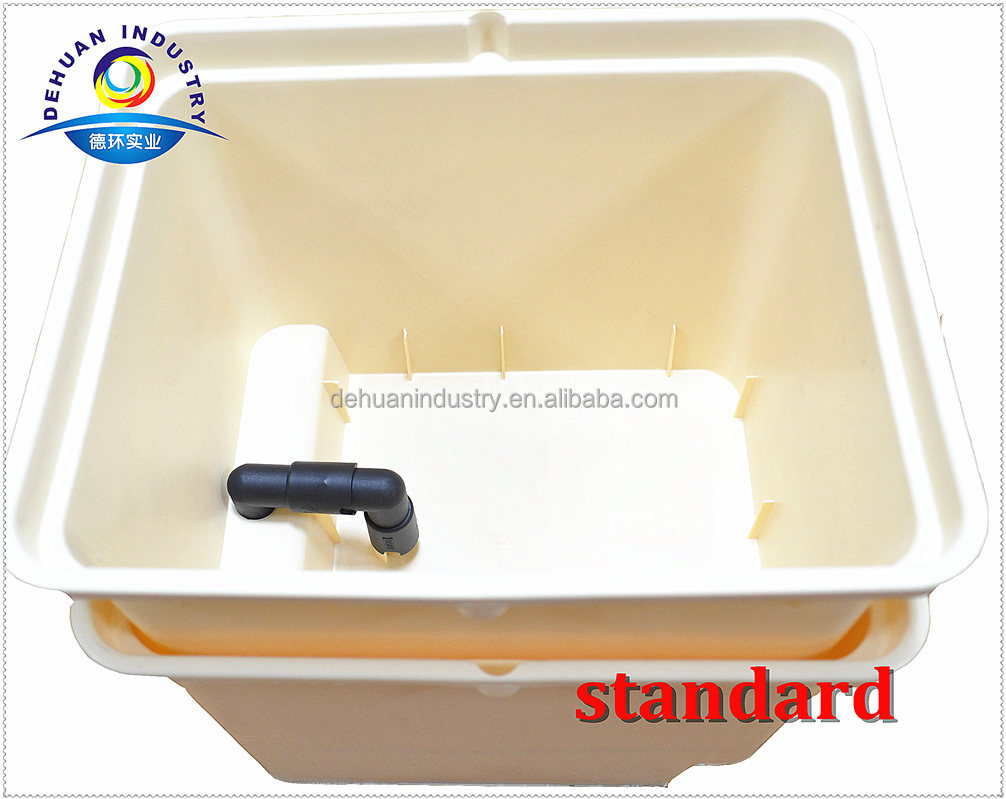
Saves Space Overall: Because the buckets are aligned, Dutch buckets are pretty good at saving space when compared to other hydroponic systems.Certain Plants Thrive: Vining, fruiting, and bushy plants - like cucumbers, tomatoes, and peppers - thrive in a Dutch Bucket system due to the amount of space they have.Recirculating System: The water that’s dripped into the buckets recirculates back into the main reservoir which saves water.The good news, however, is that there’s more to like than not like and we promise, it’s definitely worth your efforts! Dutch Bucket Pros: Dutch Bucket Diagram Dutch Bucket Pros and ConsĪs with every hydroponic system, there are pros and cons to Dutch Buckets. Step 3: Once the water hits the bottom of the bucket, the water goes into a drain and then flows back into your central reservoir. Step 2: Gravity pulls your nutrient solution down through your grow bucket, where your inert media absorbs the nutrient-rich water and supplies each plant with just the right amount of nutrients. Each bucket generally receives the same amount of “drip.” Step 1: A nutrient solution (explore our Hydroponics Nutrients Guide to learn more) is pumped up from a central reservoir and “dripped” into a row of buckets. As a fully recirculating system, each bucket will be supplied with heavy “drips” of nutrient-rich water that will eventually move down through your buckets and drain back into a central reservoir.Ī Dutch Bucket system ultimately works using gravity, making it an ideal system for beginner to intermediate growers who don’t quite consider themselves experts yet.
#Bato buckets flood and drain how to#

Please read Disclaimer for more information.

In addition, the syphon elbow’s architecture prevents the overflow of nutrient media into the recirculation unit.Ponics Life is reader-supported and contains affiliate links. Furthermore, the ability to recycle nutrients ensures that plants are cultivated in a sustainable manner with reduced waste and no risk of groundwater contamination due to excess nutrient run-off.Įach Dutch bucket has a syphon elbow that keeps a small amount of nutrient solution in the buckets at all times, so you don’t have to worry about power outages or running the pump 24 hours a day, seven days a week. The Dutch bucket allows for an extremely good balance of air and nutrient in the root region, resulting in noticeable productivity gains. Dutch Buckets are suitable for growing vegetables like tomato, bell pepper, cucumber, etc. It differs in the way it looks, but still, operates on the same principle – the nutrient is forced into the bucket then automatically drain back to the reservoir (or it can drain out of the system without returning to the reservoir) at regular intervals.

Dutch Bucket is a variation of the Ebb and flow (or Flood and Drain) method. Dutch Bucket or Bato Bucket systems, as the name sounds, use the buckets as the core of this growing method.


 0 kommentar(er)
0 kommentar(er)
